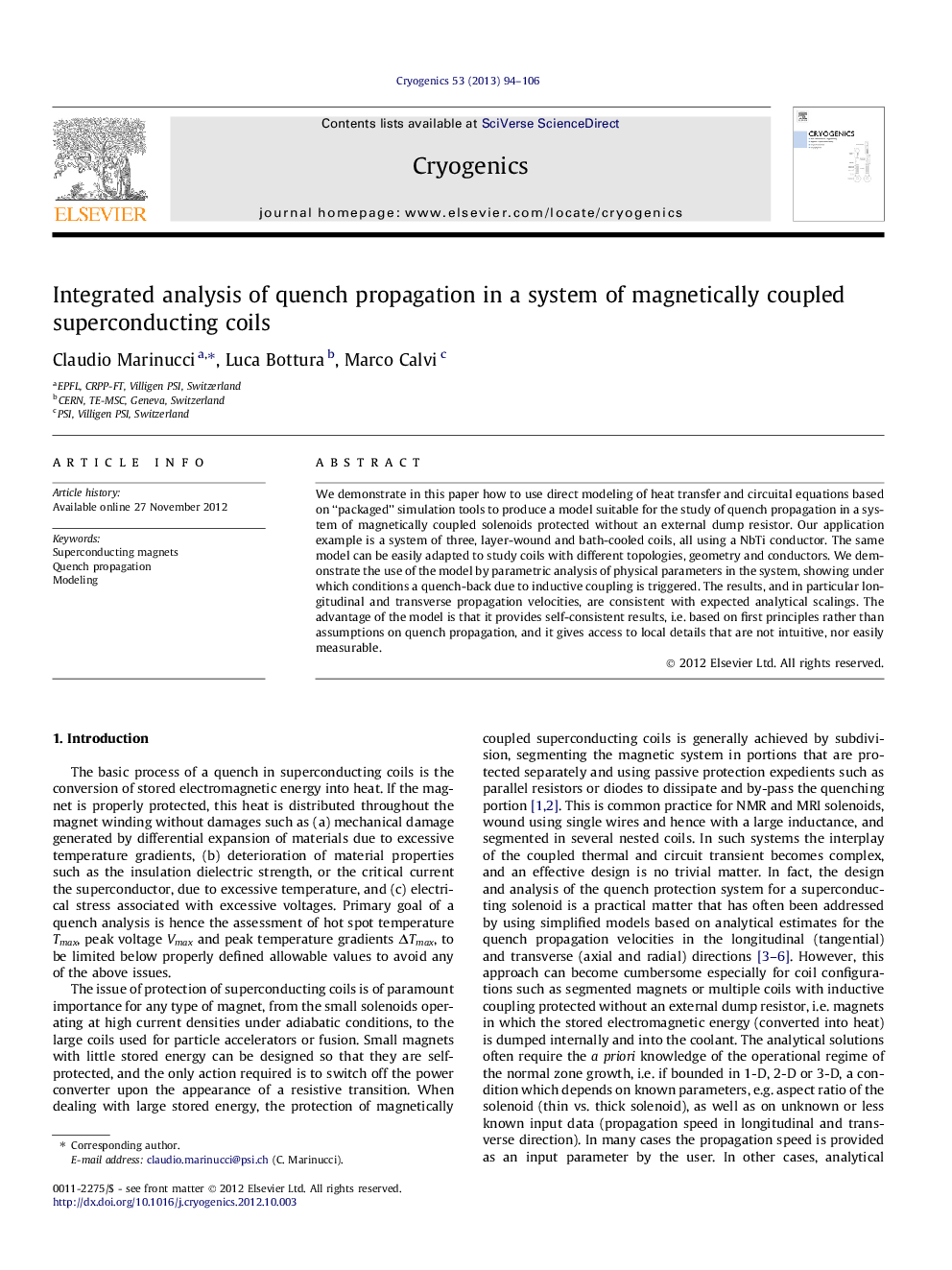| Article ID | Journal | Published Year | Pages | File Type |
|---|---|---|---|---|
| 1507693 | Cryogenics | 2013 | 13 Pages |
We demonstrate in this paper how to use direct modeling of heat transfer and circuital equations based on “packaged” simulation tools to produce a model suitable for the study of quench propagation in a system of magnetically coupled solenoids protected without an external dump resistor. Our application example is a system of three, layer-wound and bath-cooled coils, all using a NbTi conductor. The same model can be easily adapted to study coils with different topologies, geometry and conductors. We demonstrate the use of the model by parametric analysis of physical parameters in the system, showing under which conditions a quench-back due to inductive coupling is triggered. The results, and in particular longitudinal and transverse propagation velocities, are consistent with expected analytical scalings. The advantage of the model is that it provides self-consistent results, i.e. based on first principles rather than assumptions on quench propagation, and it gives access to local details that are not intuitive, nor easily measurable.
► Quench in coupled solenoids is analyzed using a tailored assembly of validated codes, taking into account the transverse heat transfer and propagation, and assessing the coil resistance in a circuital model with lumped parameters. ► Quench propagation velocity and quench resistance distribution are computed in a self-consistent method as the result of the solution of equations governing the thermal and electrical problem. ► Propagation of the normal zone in the transverse direction is shown to have the expected beneficial effect on reducing the hot spot temperature. ► Sensitivity of quench parameters to the variation of selected parameters (e.g. thermal conductivity of insulation) is shown.
